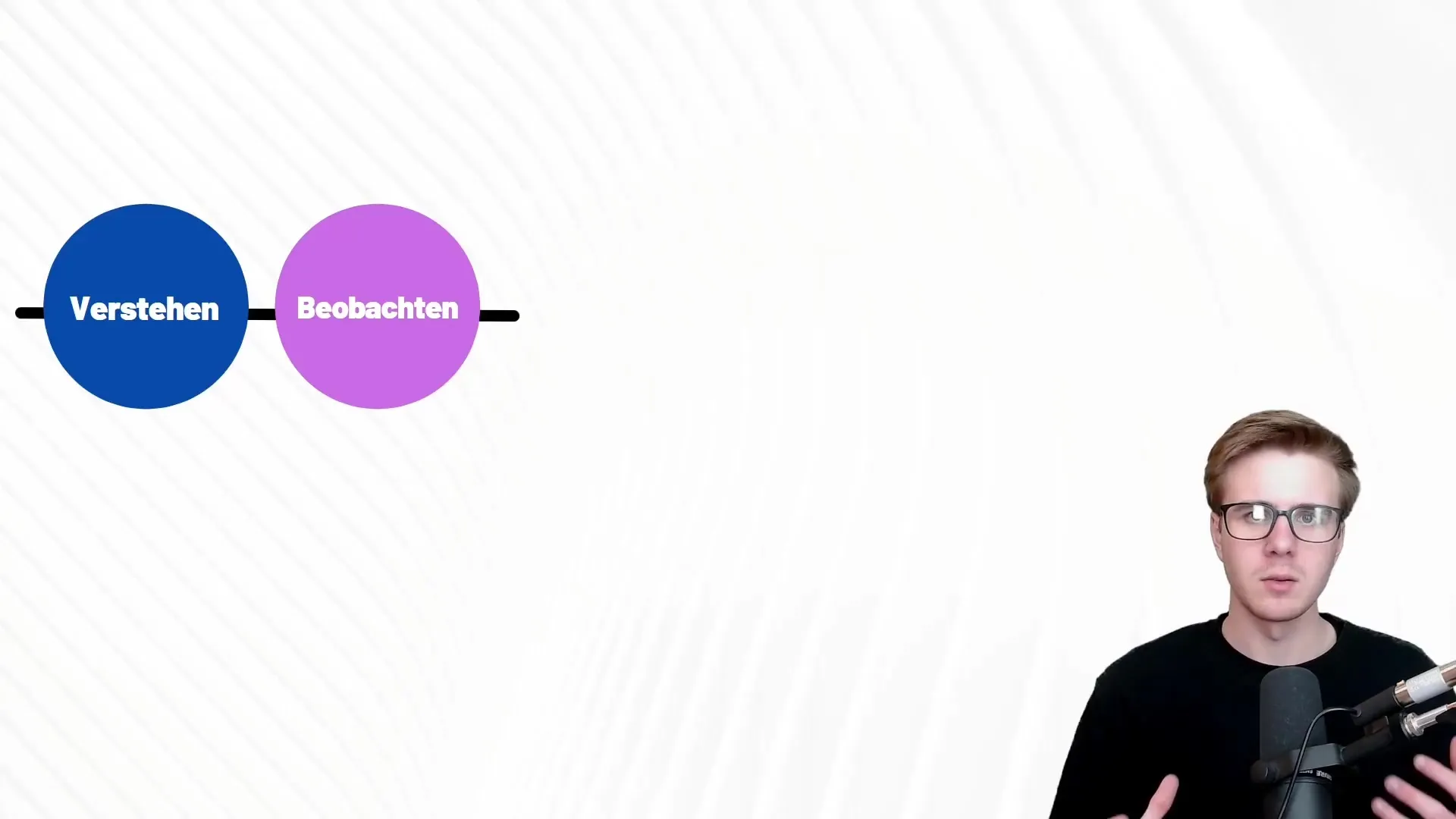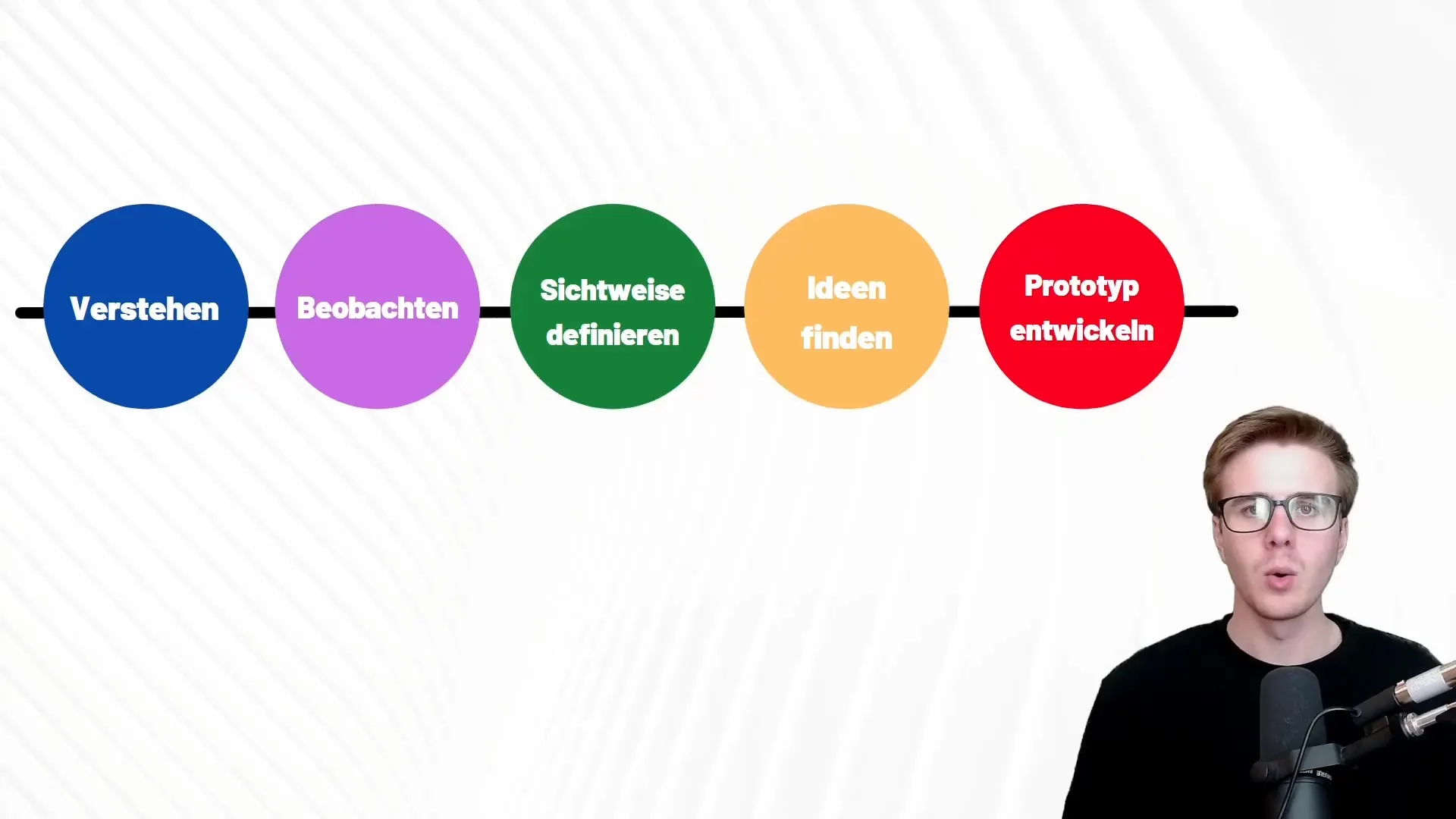Design Thinking describes an innovative process aimed at finding creative solutions to complex problems. This approach can be applied to a variety of projects, whether in product development or service design. Design Thinking not only promotes the idea of customer satisfaction but also provides a structured framework for effective and results-oriented work.
Key Insights
Design Thinking is a process that is divided into six phases: Understanding, Observing, Defining perspective, Finding ideas, Creating prototype, and Testing. This process is not linear but can be repeated in loops as needed. It plays a crucial role in the collaboration between different teams and stakeholders to ensure that the developed products benefit customers and meet their requirements.
Step-by-Step Guide
Phase 1: Understanding
The first step in the Design Thinking process is understanding the starting point. Here, you explore where the customer stands and what needs he has. Ask him what problems he faces and how he has solved them so far. Pay attention to parameters like price and time he expects. This research provides you with important information about the target audience and their desires.

Phase 2: Observing
Following understanding is the phase of observing. Here, you look at both the customer and the end user of your product. It is important to consider different perspectives since the buyer is often not the same as the user. Observations help you gain deeper insights into user behavior and their needs.

Phase 3: Defining perspective
Based on your understanding and observations, in this phase you develop a perspective. This means processing all the collected information and formulating clear issues or needs to address. This perspective forms the basis for the creative process.
Phase 4: Finding ideas
Now it's time to get creative. In this phase, everything is brought together. You use the information from previous stages to generate ideas. Organize a brainstorming session where all team members can contribute their ideas and suggestions. These ideas can later contribute to developing an initial prototype.

Phase 5: Creating prototype
In the next step, you turn the generated ideas into a prototype. The prototype is the first design of your product and should be created quickly to gather feedback from customers promptly. It is important to note that this prototype may not be perfect yet but serves as a basis for further testing.
Phase 6: Testing
In the final step, present your prototype to the customer. This is where feedback comes into play: If the prototype meets expectations, you can start production. If not, go back to the previous phases to improve ideas or the prototype. Testing gives you the opportunity to continuously optimize the prototype.
Summary
Design Thinking is a methodical approach to problem-solving that provides a clear process structured in repeatable phases. Understanding customer needs, observing their behavior, and close collaboration in interdisciplinary teams are crucial to developing innovative and customer-oriented solutions. This method not only fosters creativity but also ensures that products ultimately meet the actual needs of users.
Frequently Asked Questions
How many phases does the Design Thinking process have?The Design Thinking process consists of six phases.
What happens if the prototype does not meet expectations?In this case, you go back to previous phases to improve ideas or the prototype.
Is the Design Thinking process linear?No, the process can be repeated in loops to achieve optimal results.
What is the main goal of Design Thinking?The main goal is to develop solutions that make customers happy and satisfied.
Who should participate in the Design Thinking process?Ideally, various individuals from different departments should participate to bring diverse perspectives.


